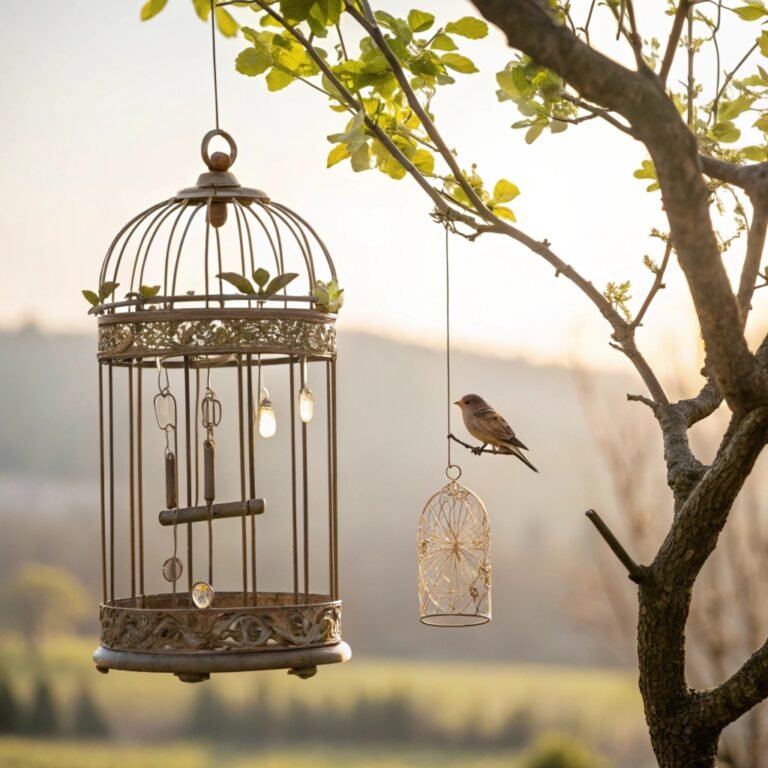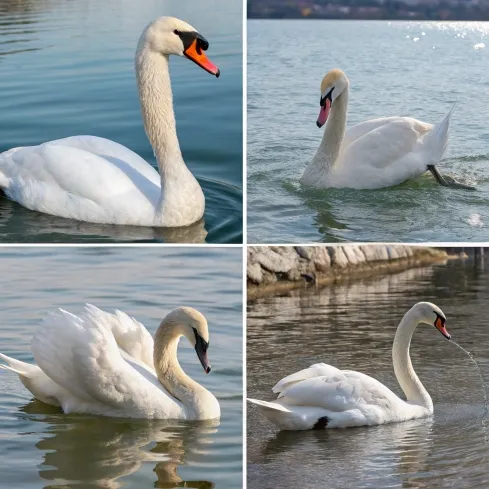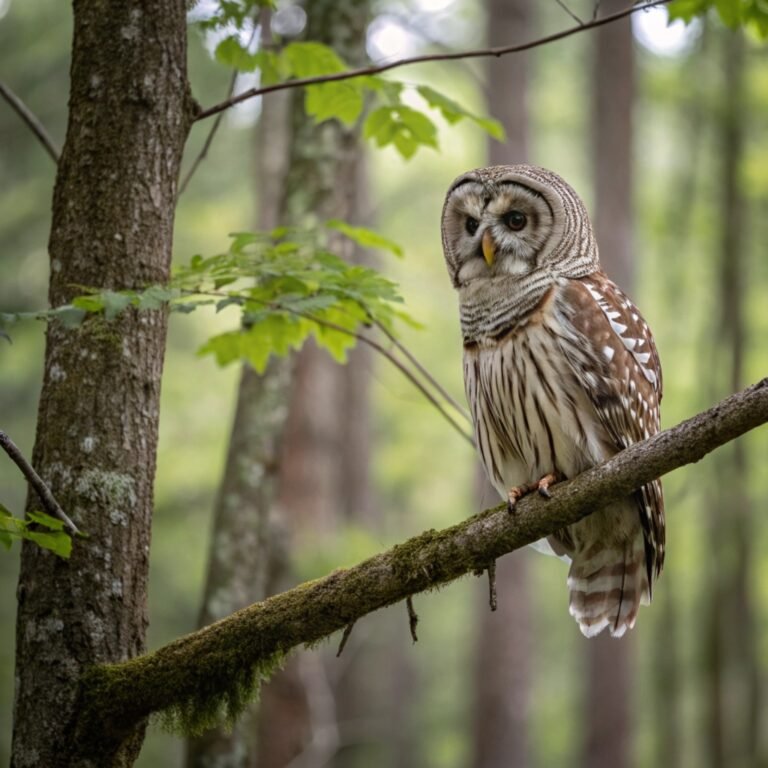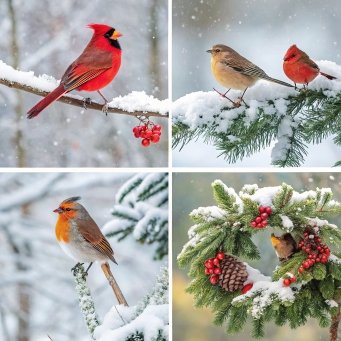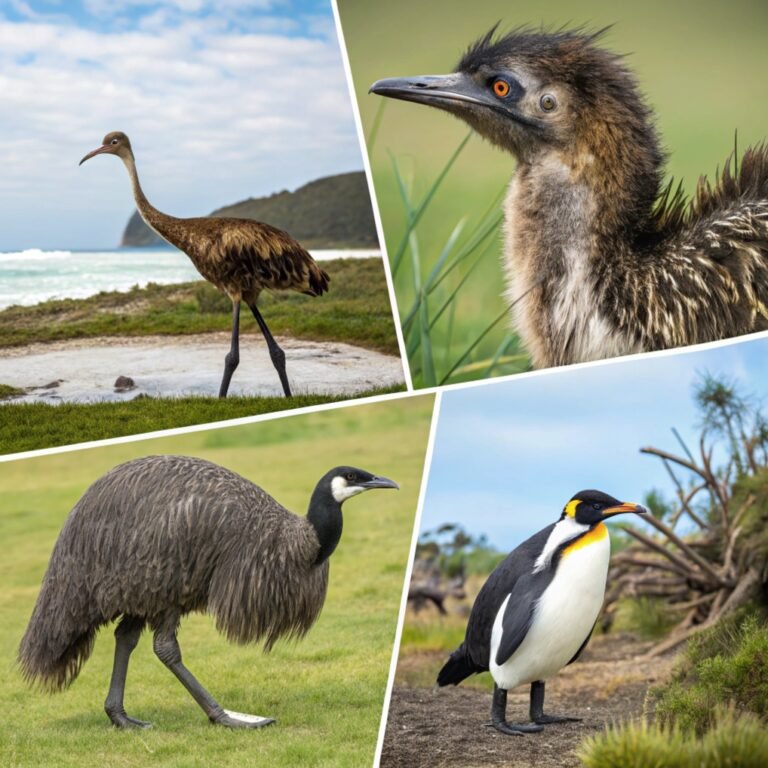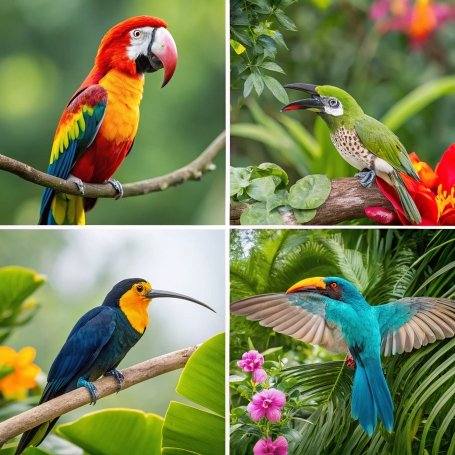How Long Do Birds Live? A Comprehensive Guide to Avian Lifespan
The fascinating world of birds captivates us with their diverse species, vibrant colors, and remarkable abilities.
One aspect that often intrigues bird enthusiasts and researchers alike is the lifespan of these feathered creatures.
From tiny hummingbirds to majestic eagles, the longevity of birds varies significantly across species.

Key Takeaways:
- Size matters: Larger birds generally live longer than smaller birds.
- Flight capability: The ability to fly is a significant factor in increasing a bird’s lifespan.
- Habitat and environment: Where a bird lives and forages can impact its longevity.
- Metabolic rate: Smaller birds with higher metabolic rates tend to have shorter lifespans.
- Predation and accidents: Many birds don’t die of old age but succumb to predators or accidents.
- Human impact: Captive birds often live longer than their wild counterparts due to reduced risks.
- Species variation: Lifespans can range from a few years for small songbirds to several decades for large parrots and seabirds.
- First-year survival: Many birds face high mortality rates in their first year of life.
- Ecological factors: Activity period and foraging environment influence lifespan differently in volant and non-volant species.
- Reproduction strategy: Birds with longer lifespans often have fewer offspring and less frequent breeding cycles.
The Relationship Between Bird Size and Lifespan
The correlation between a bird’s size and its lifespan is a fundamental principle in avian biology. Generally, larger birds tend to live longer than their smaller counterparts.
This phenomenon is observed across various bird species and can be attributed to several factors.
Larger birds typically have slower metabolic rates, which may contribute to reduced cellular damage over time.
Additionally, bigger birds often face fewer predation risks and are better equipped to withstand environmental stresses.
For instance, small birds like sparrows and finches may live only 3-5 years, while larger species such as eagles and albatrosses can survive for several decades.
This size-lifespan relationship is not absolute, however, as other factors such as habitat, diet, and genetics also play crucial roles in determining a bird’s longevity.
The Impact of Flight on Bird Longevity
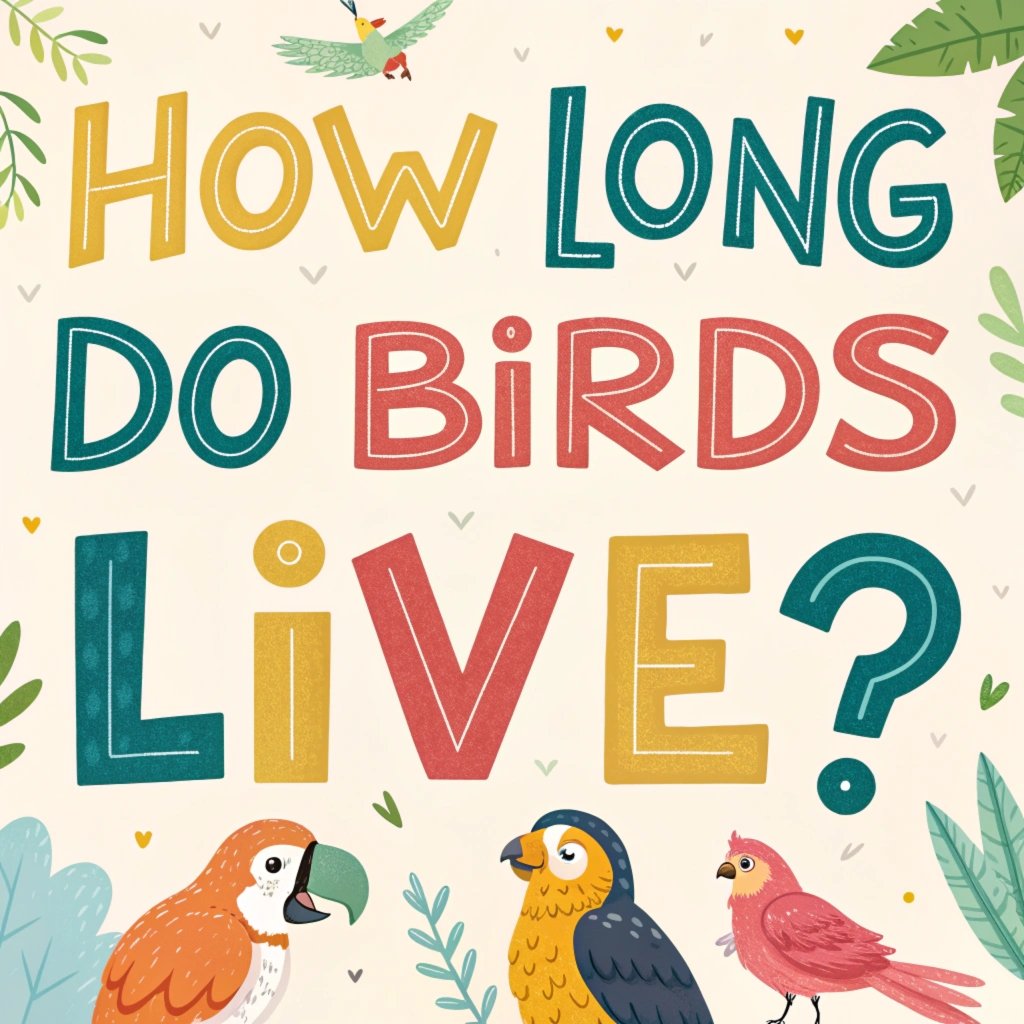
Flight capability is a significant factor in determining bird lifespan. Research has shown that volant species (those capable of flight) generally live longer than their non-volant counterparts.
The ability to fly provides birds with numerous advantages that contribute to increased longevity.
Flying birds can more easily escape predators, access diverse food sources, and migrate to more favorable environments when conditions become challenging.
This enhanced mobility and adaptability reduce the risks of predation and starvation, two major causes of mortality in birds.
Moreover, the physiological adaptations required for flight, such as efficient respiratory and circulatory systems, may also contribute to overall health and longevity.
It’s worth noting that even among flying birds, those that spend more time in flight, like seabirds, often have longer lifespans compared to ground-dwelling species.
Lifespan Variations Among Small Birds
Small birds, despite their shorter average lifespans, exhibit fascinating variations in longevity. Species such as hummingbirds, finches, and sparrows typically live between 3 to 10 years in the wild.
However, some individuals can surpass these averages. For example, the oldest known wild Ruby-throated Hummingbird lived for 9 years, which is remarkable considering their high metabolic rate and the challenges they face.
Canaries and budgerigars (parakeets) in captivity can live 5-15 years, while lovebirds may reach 10-15 years.
Cockatiels and parrotlets have even longer potential lifespans, ranging from 15-20 years.
These variations highlight the importance of factors such as diet, care, and environmental conditions in determining a small bird’s lifespan.
It’s also worth noting that many small birds compensate for their shorter lives by producing larger broods more frequently, ensuring the survival of their species.
Medium-Sized Birds and Their Lifespans
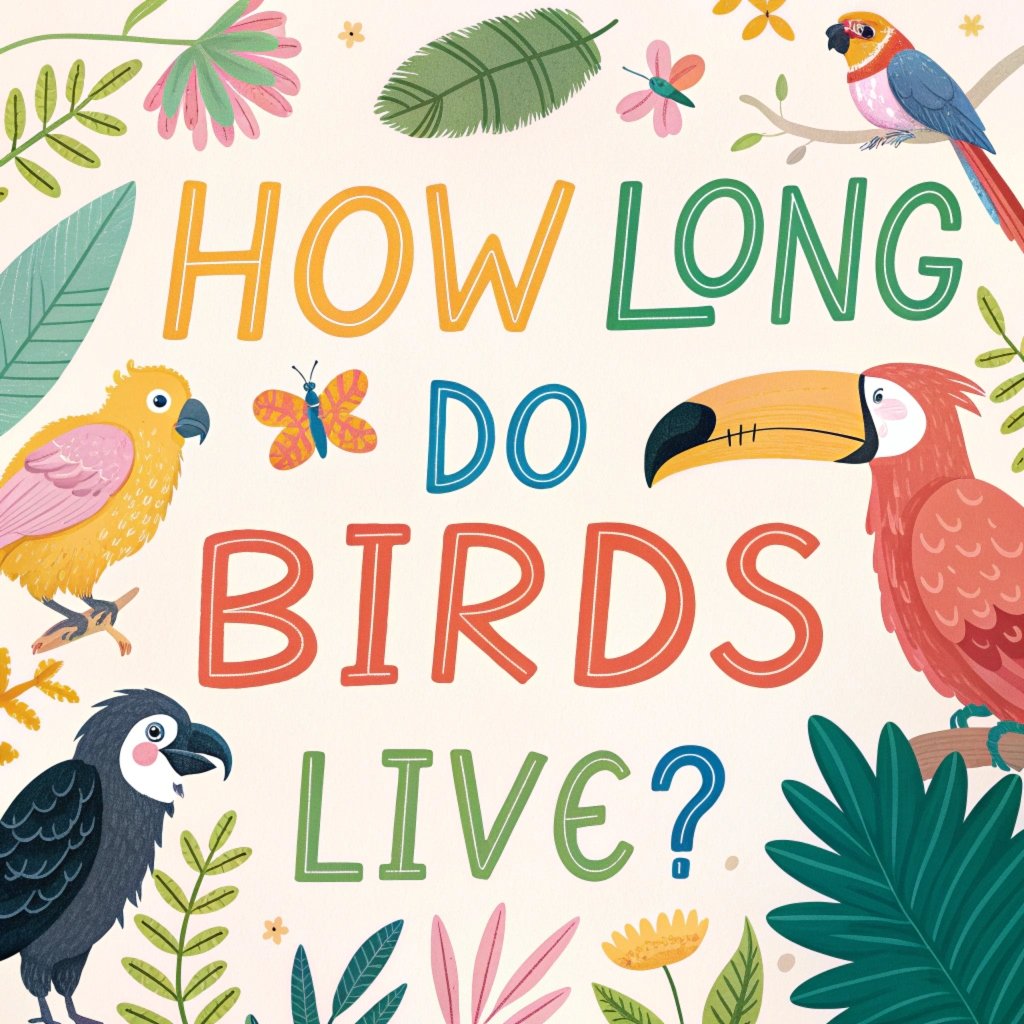
Medium-sized birds occupy an interesting middle ground in terms of lifespan. These species, which include various parrots, doves, pigeons, and some corvids, generally live longer than small birds but not as long as their larger counterparts.
For instance, cockatiels can live 15-20 years, while conures may reach 20-30 years. Pigeons and doves typically have lifespans of 10-15 years in the wild, but with proper care, they can live longer in captivity.
Corvids like crows and jays are known for their intelligence, which may contribute to their relatively long lifespans.
American Crows, for example, often live 5-7 years in the wild, with some individuals reaching 14 years or more.
Blue Jays can live up to 7 years on average, with exceptional cases living up to 26 years in captivity.
These medium-sized birds often strike a balance between the high reproductive rates of smaller birds and the longevity of larger species.
Longevity in Large Bird Species
Large bird species are renowned for their impressive lifespans, often living for several decades. Macaws, for instance, can live 50-70 years, while Amazon parrots typically reach 40-50 years.
Bald Eagles in the wild live 20-30 years but can survive up to 50 years in captivity. The African Grey Parrot, famous for its intelligence, has a lifespan of 40-60 years.
Albatrosses are among the longest-lived birds, with many species living 50 years or more. Ostriches, the largest living birds, can live 40-50 years.
These extended lifespans are attributed to several factors, including lower predation risks, slower metabolic rates, and often, more stable food sources.
Large birds also tend to have delayed sexual maturity and lower reproductive rates, investing more energy in longevity rather than rapid reproduction.
It’s important to note that these lifespans can be significantly shorter in the wild due to environmental pressures and human activities.
The Unique Longevity of Seabirds
Seabirds stand out among avian species for their exceptional longevity. Birds like albatrosses, petrels, and shearwaters routinely live for several decades, with some individuals surpassing the 50-year mark.
This remarkable lifespan is attributed to several factors unique to their marine lifestyle. Seabirds often inhabit remote, predator-free islands for breeding, reducing the risk of predation.
Their ability to cover vast distances over the ocean allows them to exploit abundant food resources and avoid localized environmental pressures.
Additionally, many seabirds have delayed sexual maturity and produce only one egg per year, investing heavily in offspring survival rather than quantity.
This low reproductive rate is balanced by their extended lifespan, allowing for multiple breeding attempts over many years.
The oldest known wild bird, a Laysan Albatross named Wisdom, is at least 70 years old and still laying eggs, showcasing the remarkable longevity potential of seabirds.
Factors Affecting Bird Mortality Rates
Understanding bird mortality rates is crucial in comprehending their overall lifespan. Numerous factors contribute to bird deaths, often preventing them from reaching their maximum potential lifespan.
Predation is a significant cause, particularly for smaller birds and juveniles. Environmental hazards such as extreme weather conditions, habitat loss, and pollution also play a role.
Human activities, including collisions with buildings and vehicles, pose substantial risks. Disease and parasites can affect bird populations, sometimes leading to widespread mortality.
Interestingly, many birds don’t die of old age but succumb to these external factors. The first year of life is particularly critical, with mortality rates as high as 80-90% in some species.
Those that survive this crucial period have a better chance of reaching adulthood and living longer.
Understanding these factors is essential for conservation efforts aimed at protecting bird populations and enhancing their longevity.
The Role of Habitat in Bird Lifespan
A bird’s habitat plays a crucial role in determining its lifespan. Different environments present unique challenges and opportunities that can either extend or shorten a bird’s life.
Forest-dwelling birds, for instance, may benefit from the cover provided by trees, reducing predation risks.
However, they also face challenges such as habitat fragmentation and deforestation. Grassland birds often have shorter lifespans due to increased exposure to predators and environmental fluctuations.
Urban birds face a unique set of challenges, including collisions with buildings and exposure to pollutants, but may benefit from reduced predation and access to human-provided food sources.
Tropical birds generally have longer lifespans compared to temperate species, possibly due to more stable environmental conditions and food availability year-round.
Migratory birds face additional risks during their long journeys but may benefit from accessing optimal habitats seasonally.
Understanding these habitat-related factors is crucial for conservation efforts aimed at protecting bird populations and their longevity.
Comparing Wild and Captive Bird Lifespans
The lifespan of birds can differ significantly between wild and captive environments. Generally, captive birds tend to live longer than their wild counterparts due to several factors.
In captivity, birds are protected from predators, have access to regular veterinary care, and are provided with a consistent food supply.
They also don’t face the risks associated with migration or environmental hazards. For example, a Bald Eagle might live 20-30 years in the wild but can reach 50 years in captivity.
Parrots show even more dramatic differences, with some species living twice as long in captivity compared to the wild.
However, it’s important to note that captive longevity doesn’t necessarily reflect natural lifespans.
Wild birds, while facing more risks, engage in natural behaviors and play crucial ecological roles.
The challenge for conservationists and avian caretakers is to balance the benefits of captivity with the need to maintain natural behaviors and genetic diversity.
Bird Lifespans: From Shortest to Longest
The spectrum of bird lifespans is vast and varied, ranging from just a few years to several decades. At the shorter end, we find small songbirds like warblers and wrens, which typically live 3-6 years in the wild.
Hummingbirds, despite their high-energy lifestyle, can live 6-8 years. Moving up the scale, pigeons and doves average 10-15 years, while crows and ravens can reach 15-20 years.
Hawks and falcons often live 8-20 years. Larger birds tend to have longer lifespans: eagles can live 20-30 years in the wild, geese 10-24 years, and swans 20-30 years.
At the extreme end of longevity, we find parrots and seabirds. Large parrots like macaws can live 50-70 years, while some albatross species may surpass 50 years.
The record for the oldest known wild bird belongs to a Laysan Albatross named Wisdom, who is at least 70 years old. These variations highlight the incredible diversity in avian life histories.
The Science Behind Avian Aging
The biological processes underlying avian aging have fascinated scientists for years. Birds, despite their high metabolic rates and body temperatures, often live longer than mammals of similar size.
This phenomenon, known as avian longevity, is attributed to several factors. Birds have efficient respiratory systems and unique adaptations to manage oxidative stress, which is a key factor in aging.
Their ability to fly has led to the evolution of lightweight yet durable bones and efficient cardiovascular systems.
Research has shown that birds possess enhanced DNA repair mechanisms and more stable chromosomes, which may contribute to their longevity.
Additionally, some birds, particularly long-lived species, exhibit negligible senescence, showing little to no physical deterioration with age.
Understanding these mechanisms not only sheds light on avian biology but also offers potential insights into human aging and age-related diseases.
Conservation Implications of Bird Lifespan
Understanding bird lifespans has significant implications for conservation efforts.
Long-lived species, such as albatrosses and large parrots, are particularly vulnerable to population declines because they have low reproductive rates and take many years to reach sexual maturity.
Even small increases in adult mortality can have severe impacts on their populations.
Conversely, short-lived species with high reproductive rates can recover more quickly from population setbacks. Conservation strategies must be tailored to these life history traits.
For long-lived species, protecting adult survival is crucial, which may involve reducing threats like fisheries bycatch or habitat destruction.
For shorter-lived species, ensuring successful breeding and high juvenile survival rates is often key.
Climate change poses a particular challenge, as it may affect food availability and breeding habitats.
By understanding the factors that influence bird lifespans, conservationists can develop more effective strategies to protect avian biodiversity for future generations.
FAQs
What is the average lifespan of a wild bird?
The average lifespan of a wild bird varies greatly depending on the species, but most wild birds live between 7 to 10 years. However, this is a broad generalization, as some small species may only live for 3-5 years, while larger birds can live for several decades.
Do birds in captivity live longer than wild birds?
Generally, yes. Birds in captivity often live longer than their wild counterparts due to factors such as protection from predators, consistent food supply, and access to veterinary care. For example, a parrot that might live 20-30 years in the wild could potentially live 50-70 years in captivity.
Which bird has the longest known lifespan?
The bird with the longest known lifespan is a Laysan Albatross named Wisdom. She is at least 70 years old and still actively breeding. Among captive birds, some large parrot species have been known to live up to 80 years or more.
How does a bird’s size relate to its lifespan?
Generally, larger birds tend to live longer than smaller birds. This is due to factors such as lower metabolic rates, reduced predation risk, and the ability to withstand environmental stresses. However, there are exceptions to this rule.
What factors can shorten a bird’s lifespan in the wild?
Several factors can shorten a bird’s lifespan in the wild, including predation, disease, environmental hazards, habitat loss, climate change, and human activities such as pollution and collisions with structures. Many birds, especially young ones, don’t reach their potential maximum lifespan due to these factors.

Hello, I’m Emily Price, the founder of Birds Affection. As a passionate bird enthusiast and spiritual seeker, I’ve always been fascinated by the symbolic meanings and mystical connections between birds and our lives. On this website, I share my knowledge and insights on the spiritual significance of various bird species, exploring their roles as messengers, guides, and teachers. Through my writing, I aim to inspire and educate others on the profound wisdom and beauty that birds bring to our world. Join me on this journey as we delve into the enchanting realm of bird symbolism and discover the hidden meanings behind these magnificent creatures.


